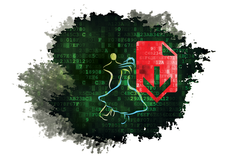Changing from a Samba classic domain to Samba 4
Upgrade or Wait

Samba 4 has been around for more than three years, but some users still shy from it. If you are still sitting on the fence, this tour through some of the new features and capabilities might help you decide whether it is finally time to upgrade.
Samba [1] is the tool of choice for providing Windows-like file and print sharing services on a Linux server. If you only need basic file and print services, switching to Samba 4 it not worth the effort because the new Samba is not so much different. Samba 4 still contains the smbd, nmbd, and winbindd components, although it also has the samba service on-board, which Samba needs for the new features. You will also find some limitations. For instance, Samba 4 reduces access to TDBs (trivial databases) to a minimum.
But, if you use Samba in a classic Windows NT4 domain setting, and if you are willing to delve more deeply into the Windows world, some of the new Samba 4 features might come in handy.
What's New?
The main feature of Samba 4 is the possibility of using a Samba server as a full-fledged replacement for a Windows AD domain controller. Samba 4 supports Windows environments as of Windows 2000.
[...]
Buy this article as PDF
(incl. VAT)
Buy Linux Magazine
Subscribe to our Linux Newsletters
Find Linux and Open Source Jobs
Subscribe to our ADMIN Newsletters
Support Our Work
Linux Magazine content is made possible with support from readers like you. Please consider contributing when you’ve found an article to be beneficial.

News
-
Another Linux Malware Discovered
Russian hackers use Hyper-V to hide malware within Linux virtual machines.
-
TUXEDO Computers Announces a New InfinityBook
TUXEDO Computers is at it again with a new InfinityBook that will meet your professional and gaming needs.
-
SUSE Dives into the Agentic AI Pool
SUSE becomes the first open source company to adopt agentic AI with SUSE Enterprise Linux 16.
-
Linux Now Runs Most Windows Games
The latest data shows that nearly 90 percent of Windows games can be played on Linux.
-
Fedora 43 Has Finally Landed
The Fedora Linux developers have announced their latest release, Fedora 43.
-
KDE Unleashes Plasma 6.5
The Plasma 6.5 desktop environment is now available with new features, improvements, and the usual bug fixes.
-
Xubuntu Site Possibly Hacked
It appears that the Xubuntu site was hacked and briefly served up a malicious ZIP file from its download page.
-
LMDE 7 Now Available
Linux Mint Debian Edition, version 7, has been officially released and is based on upstream Debian.
-
Linux Kernel 6.16 Reaches EOL
Linux kernel 6.16 has reached its end of life, which means you'll need to upgrade to the next stable release, Linux kernel 6.17.
-
Amazon Ditches Android for a Linux-Based OS
Amazon has migrated from Android to the Linux-based Vega OS for its Fire TV.

